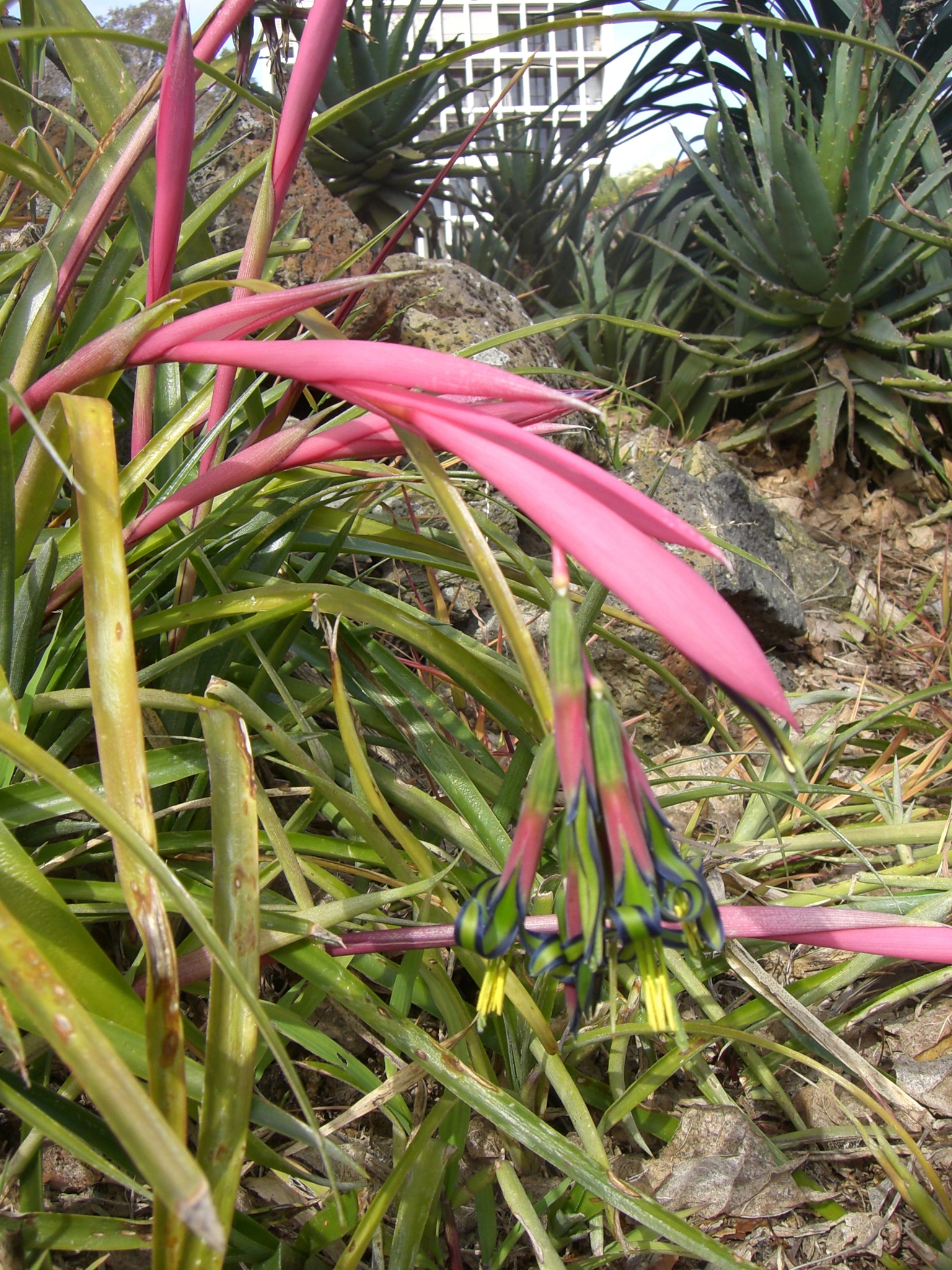
Named after the Swedish botanist J.G. Billberg (1772–1884).
Stemless epiphytes. Leaves broadly linear; forming funnel-shaped or tubular rosettes, often with cross-bands or spotting, spiny or toothed margins. Inflorescence usually a pendent raceme with large brightly coloured bracts, mostly red or pink. Flowers showy, sepals often densely white mealy, petals often rolled back to the base in a spiral manner; stamens and style protruding. Fruit a many-seeded berry.
Many are hardy and flower easily. Billbergia nutans is the most widely cultivated as it will tolerate a wide range of growing conditions as a garden plant.
Seed or offsets.
About 62 species from tropical America, mostly eastern Brazil.
Heavily cross-banded or spotted, spiny-margined leaves forming a funnel; pendent inflorescences with large, bright pink or red bracts.
Source: (2005). Bromeliaceae. In: . Horticultural Flora of South-eastern Australia. Volume 5. Flowering plants. Monocotyledons. The identification of garden and cultivated plants. University of New South Wales Press.
